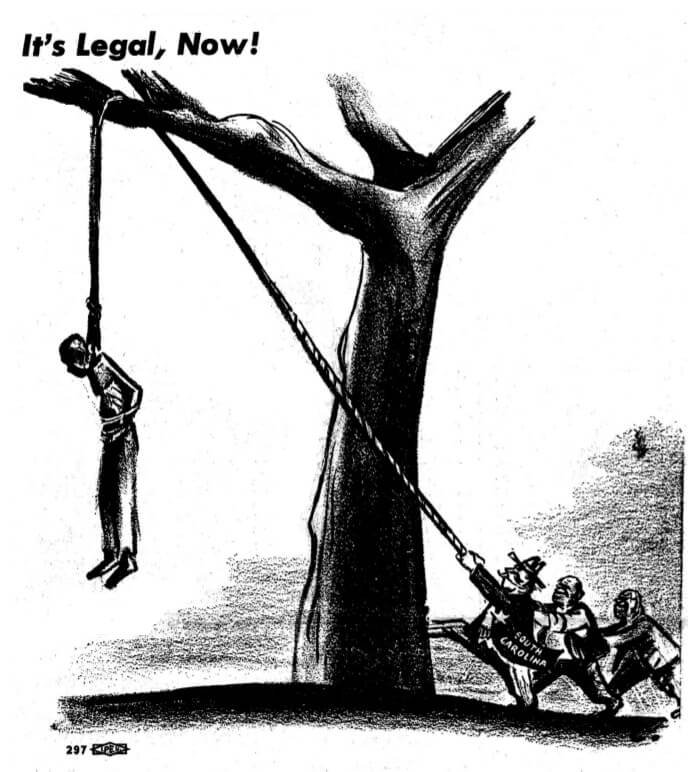This new book of political cartoons, In an Era of Wars and Revolutions: American Socialist Cartoons of the Mid-Twentieth Century, edited by Sean Matgamma, should be of interest to labor historians and those interested in mid-20th century Left politics. The title page of this unique volume of reprints indicates the art is “By Carlo and others.” Jesse Cohen, the artist who called himself “Carlo” was, along with Laura Gray, the leading artist for the “Third Camp” section of Trotskyists, succeeded at the end of the 1960s by Lisa Lyon (the others are long gone, her work continues in comic art). This is, in short, a highly polemical volume directed perhaps as much at Communist parties from Russia to Europe and the US, as at capitalism.

We would learn more if the book had a more substantial introduction (how were these socialists starkly different from the mainstream Socialist party variety?) on politics but also on the subject of artistic composition, and the personal stories of the artists themselves. Happily, curious readers can turn to a web posting by Kent Worcester on Gray and Cohen’s biographies, although I wish his comments appeared in the volume. There is an additional oddity: perhaps fifteen pages contain comic art from the Daily Worker of the 1920s, on the premise that before Trotskyists were driven away, the revolutionary tradition includes them. But these are, by ironic fact, artists far better known than the Trotskyist variety, including Fred Ellis, William Gropper, and CP leader Robert Minor—all loyal Communists whose “class struggle” themes are not much different in the 1930s and later.

The accomplishment of the volume is, then, a simple one: making this cartoon art available again, unique mainly by virtue of its Third Camp expressions but interesting in relation to the American leftwing cartoon and comic art during the 1930s-50s. Workers are large-bodied, sometimes literal giants, physically capable of smashing capitalism by a single blow but held back by assorted forces (often, not always, Communist regulars). Stalin is a monster much like Hitler and perhaps worse because he pretends to be a Marxist revolutionary. Politicians, like capitalists, are united for corporate profits and ruthless toward human needs.
The editor has added phrases of explanation to explain particulars, for instance the antiwar cartoon of 1945 that was cited by government attorneys to prove the Third Camp socialists to be subversives. The annotations would be more helpful with an occasional criticism of overdone art, or any comments on the art, comparing one artist to another.

Historians of the labor and left who have spent so much time (usually on microfilms, sometimes in the crumbling pages of magazines) amid scholarly investigations, checking out the comic images will want to see these examples. They will probably, like myself, be thinking of the cartoons in the Weekly People of the Socialist Labor Party, which these most nearly resemble, the vastly funnier cartoons in the New Masses of the 1930s (numerous artists here went on to professional cartooning in the New Yorker and elsewhere), and the longer tradition that stretches back to the 1910s socialist and wobbly press, not forgetting The Masses and The Liberator. There is no Art Young here, nor artists who doubled as Works Progress Administration muralists, nor those who became noted children’s book after their stint in the Left. Still, we welcome what we can get.
Paul Buhle edited Labor’s Joke Book, with a variety of left cartoon artists’ work reprinted, and co-edited Images of American Radicalism, with many more.







